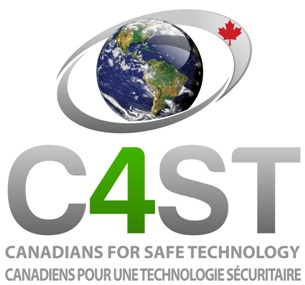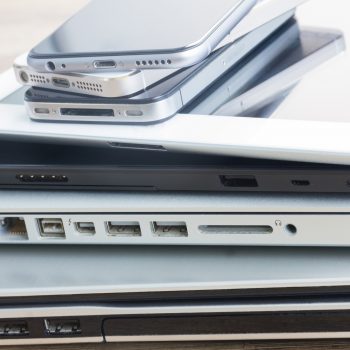
Brain tumours now the most frequent form of cancer in U.S. adolescents: Ground-breaking American study
- 0 Comments
Are worst fears about mobile phones being realized?
Sobering statistics
Brain tumours are now the leading cancer in American adolescents, and incidence is rising in young adults according to the largest, most comprehensive analysis of these age groups to date.
Canada is undoubtedly similar. “The astounding increases reported in this study, especially in young people, mirror what I am seeing in my clinic,” responded Dr. Jacob Easaw, from the Tom Baker Cancer Centre in Calgary. “Canada is in the process of establishing a comparable brain tumour registry, so these analyses will not be available here for 15 or 20 years. I am increasingly convinced that mobile phones are a major cause, and urgent action is needed.”
Time for a cancer prevention strategy for young Canadians!
A 2015 Parliamentary Health Committee hearing into Canada’s exposure standards for radiofrequency radiation made extensive recommendations, including more scientific research and better review, precautionary advice to minimize exposures, and use of safer technologies. “Cancer prevention should include pragmatic actions on contributors to cancer. A brain tumour registry is an important facet of a proposed broader Canadian Environmental Health Information Infrastructure project – a collaborative effort of scientists and physician researchers to enable earlier detection of harmful effects, by meshing environmental and health information,” said Ottawa hematologist and researcher, Dr. Richard van der Jagt.
Safer Tech Tips
Use wired options whenever possible at home, work and school. Radiation intensity decreases further from the source, so if you must use a wireless device, use speakerphone or a headset. Device instructions say to keep devices away from the body, or put on “airplane” mode to stop emissions that otherwise continue while the device is on, even when not actively being used. Pediatricians recommend limiting children’s screen time; they should use only wireless-disabled devices. If you must use wi-fi, put the wireless network source (e.g., router, modem) on a timer so it is off when not in use. For more information and tips, Prevent Cancer Now’s radiofrequency radiation page is here.
For more information, please contact:
Meg Sears, PhD
Chair and Science Advisor, Prevent Cancer Now
(613) 297-6042
Info@PreventCancerNow.ca
Richard van der Jagt, MD, FRCP(C)
Ottawa Hospital (General Campus)
Div. Hematology
University of Ottawa
613) 737-8804
Prevent Cancer Now is a Canadian national civil society organization including scientists, health professionals and citizens working to stop cancer before it starts, through research, education and advocacy to eliminate preventable causes of cancer.
BACKGROUND
Increasing certainty re. brain tumours and wireless devices
In 2011, radiofrequency radiation (RFR) from wireless communications devices was declared a “possible carcinogen” by the World Health Organization’s International Agency for Research on Cancer (IARC). Subsequent studies of phone use by people with brain tumours compared with healthy people (case-control studies) strengthened evidence of more cancers with greater exposure, measured as years of use, cumulative hours, more calls, or starting earlier in life. If repeated today, IARC may well conclude “probable” or “known” carcinogen.
Scientists were alarmed, but increasing rates of rare cancers may not be immediately obvious, especially if tumour registries are not scrupulously maintained. For example, Swedish in-patient records indicated a 23% increase in brain tumours from 2008 to 2013, although under-reporting meant that no increase was seen in the Swedish Cancer Registry.
Now, however, with more cellular phone subscriptions than people in the US, this high quality American registry indicates clearly increasing brain tumours.
Testicular and breast cancer
While brain tumours predominate among adolescents, testicular cancer is diagnosed more frequently in young adult males. In Canadian males 15-29 years, testicular cancer increased 2.7% per year between 1996 and 2005. Phones carried in pockets may contribute, as sperm are damaged by radiofrequency radiation exposure from phones in pockets and laptops. Young women habitually carrying phones in bras are developing characteristic breast cancers.
Overall cancers in the young
Cancer is increasing overall in Canadian adolescents and young adults (15-29 years) according to the Public Health Agency of Canada. From 1996 to 2005 cancer incidence rates increased:
- 0.8% per year in males; testicular cancer increased 2.7% per year
- 1.4% per year in females; thyroid cancer increased 6.5% per year
US Surveillance, Epidemiology and End Results (SEER) data indicates that cancers in 0-19 year olds increased 20%, between the averaging periods 1975-1984 and 2004-2012. Another analysis indicates a 35% increase in young people between 1975 and 2010, with adolescent and young adult cancers increasing the most rapidly, apart from rates in adults over 65 years of age (cancer increases with age).
Canada offers only recent child cancer incidence data, but longer term data is available south of the border.

With a smaller population (hence greater random data scatter) and a shorter time-frame, the Public Health Agency of Canada reports no change in incidence among those 0-14 years old or adolescents 15-19 years, between 1992 and 2007. The overlap between Canadian and US Surveillance, Epidemiology and End Results (SEER) data, however, suggests that Canada may be on the same long-term trend of increasing incidence among our youngest.
Some Key Scientific References:
- Ostrom, Quinn T., Haley Gittleman, Peter M. de Blank, Jonathan L. Finlay, James G. Gurney, Roberta McKean-Cowdin, Duncan S. Stearns, et al. “American Brain Tumor Association Adolescent and Young Adult Primary Brain and Central Nervous System Tumors Diagnosed in the United States in 2008-2012.” Neuro-Oncology 18, no. suppl 1 (January 1, 2016): i1–50. doi:10.1093/neuonc/nov297.
- IARC Monographs on the Evaluation of Carcinogenic Risks to Humans. Volume 102 (2013). Non-Ionizing Radiation, Part 2: Radiofrequency Electromagnetic Fields. Available at: http://monographs.iarc.fr/ENG/Monographs/vol102/index.php Accessed March 5, 2016.
- Coureau, Gaëlle, Ghislaine Bouvier, Pierre Lebailly, Pascale Fabbro-Peray, Anne Gruber, Karen Leffondre, Jean-Sebastien Guillamo, et al. “Mobile Phone Use and Brain Tumours in the CERENAT Case-Control Study.” Occupational and Environmental Medicine, May 9, 2014, oemed – 2013–101754. doi:10.1136/oemed-2013-101754.
- Hardell, Lennart, and Michael Carlberg. “Re: Mobile Phone Use and Brain Tumours in the CERENAT Case–control Study.” Occupational and Environmental Medicine 72, no. 1 (January 1, 2015): 79–79. doi:10.1136/oemed-2014-102448.
- Coureau, Gaëlle, Karen Leffondre, Anne Gruber, Ghislaine Bouvier, and Isabelle Baldi. “Author’s Response: Re ‘Mobile Phone Use and Brain Tumours in the CERENAT Case–control Study.’” Occupational and Environmental Medicine 72, no. 1 (January 1, 2015): 79–80. doi:10.1136/oemed-2014-102649.
- Hardell, Lennart, and Michael Carlberg. “Mobile Phone and Cordless Phone Use and the Risk for Glioma – Analysis of Pooled Case-Control Studies in Sweden, 1997–2003 and 2007–2009.” Pathophysiology 22, no. 1 (January 3, 2015): 1–13. doi:10.1016/j.pathophys.2014.10.001.
- Hardell, Lennart. “Pooled Analysis of Case-Control Studies on Acoustic Neuroma Diagnosed 1997-2003 and 2007-2009 and Use of Mobile and Cordless Phones.” International Journal of Oncology, July 22, 2013. doi:10.3892/ijo.2013.2025.
- Adams, Jessica A., Tamara S. Galloway, Debapriya Mondal, Sandro C. Esteves, and Fiona Mathews. “Effect of Mobile Telephones on Sperm Quality: A Systematic Review and Meta-Analysis.” Environment International 70 (September 2014): 106–12. doi:10.1016/j.envint.2014.04.015
- Avendaño, Conrado, Ariela Mata, César A Sanchez Sarmiento, and Gustavo F Doncel. “Use of Laptop Computers Connected to Internet through Wi-Fi Decreases Human Sperm Motility and Increases Sperm DNA Fragmentation.” Fertility and Sterility 97, no. 1 (January 2012): 39–45.e2. doi:10.1016/j.fertnstert.2011.10.012.
- West, John G., Nimmi S. Kapoor, Shu-Yuan Liao, June W. Chen, Lisa Bailey, and Robert A. Nagourney. “Multifocal Breast Cancer in Young Women with Prolonged Contact between Their Breasts and Their Cellular Phones.” Case Reports in Medicine 2013 (September 18, 2013): e354682. doi:10.1155/2013/354682.

